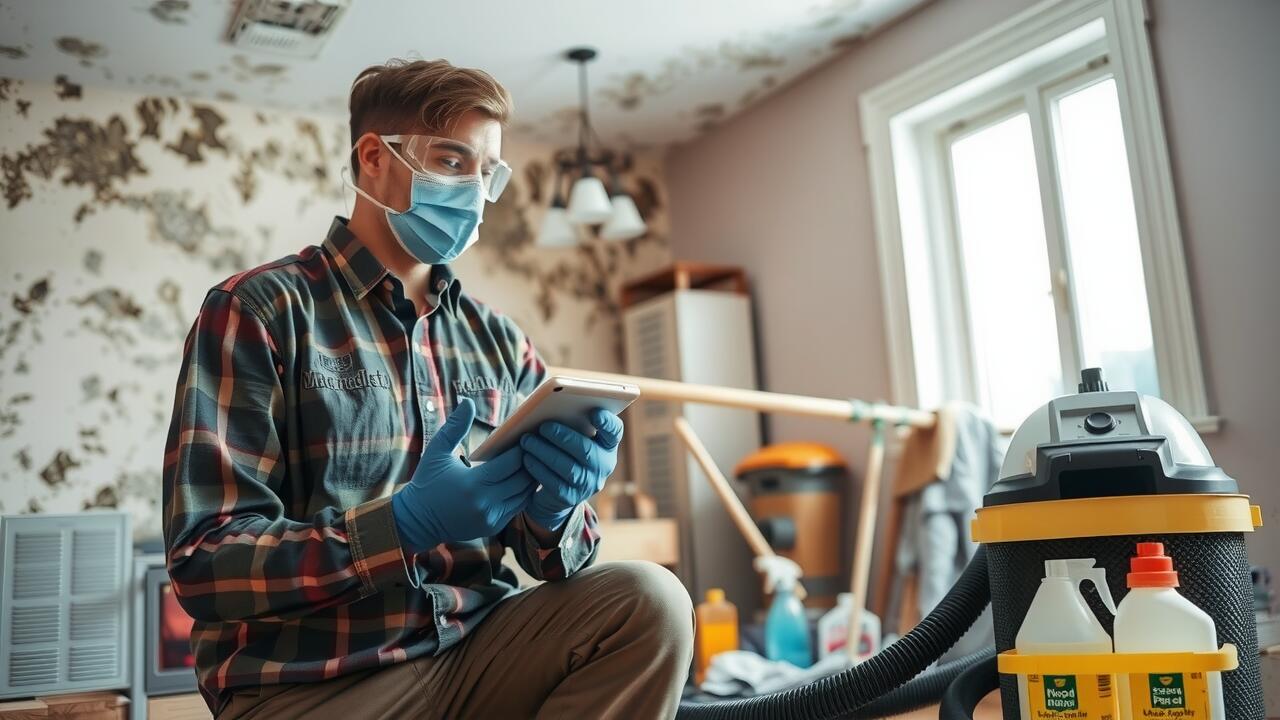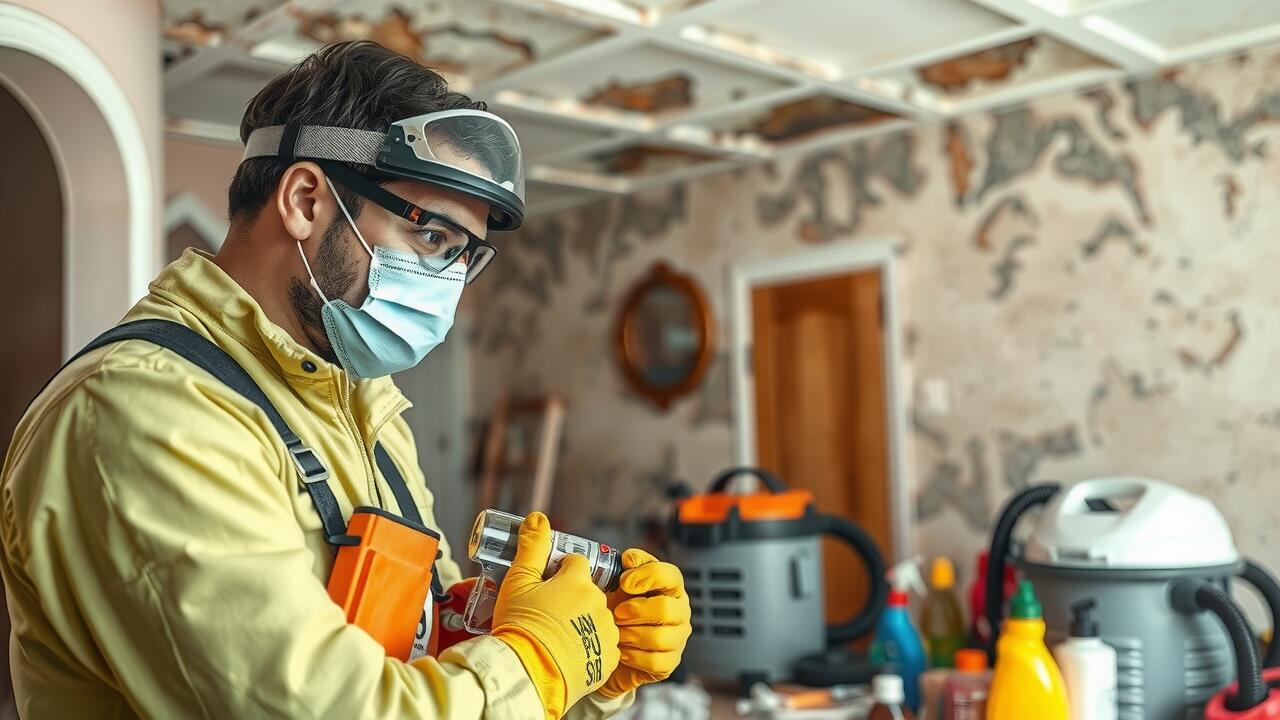
Tenant Rights in Relation to Mold
Tenants have specific rights when it comes to mold exposure in rental properties. Ohio law requires landlords to maintain habitable living conditions, which includes ensuring that properties are free from mold that could pose health risks. Renters experiencing mold issues should notify their landlords promptly. This communication serves as a crucial step toward addressing the problem and seeking necessary remediation.
In the case of mold infestation, tenants may have the right to seek remediation services. This is particularly relevant for residents who may consider Mold Remediation in Bexley, Ohio. Engaging professionals can help ensure that the mold is removed safely and effectively, restoring a safe living environment. If landlords fail to act after being informed of mold issues, tenants might be able to pursue legal remedies or withhold rent until remediation is completed.
What Renters Should Know About Their Protections
Renters in Ohio have specific protections when it comes to mold issues in their living spaces. Landlords are required to maintain a safe and habitable environment, which includes addressing mold problems promptly. Tenants should be aware that if they encounter mold, they should notify their landlord immediately and document any communications regarding the issue. This notification can serve as an important record in the case of disputes regarding living conditions.
Mold Remediation in Bexley, Ohio, may vary based on local regulations and the severity of the mold problem. Renters often have the right to request professional mold assessments when they suspect a significant issue. If a landlord fails to address the situation in a timely manner, tenants may seek legal recourse, including withholding rent or pursuing repairs independently, depending on the circumstances. Awareness of these rights helps ensure that renters can advocate for a healthier living environment.
Mold Testing and Remediation Options
Identifying the presence of mold in residential properties requires a thorough testing process. Homeowners and renters often start by looking for visible signs of mold or musty odors. Professional inspectors utilize specialized tools such as moisture meters and infrared cameras to detect hidden mold spores or damp areas. Samples may also be collected for laboratory analysis to determine the type and concentration of mold present. These tests can confirm whether the mold poses a health risk, leading to informed decisions regarding remediation.
For residents facing mold concerns, exploring remediation options is crucial. Mold remediation in Bexley, Ohio, typically involves removing contaminated materials, cleaning surfaces with appropriate solutions, and repairing any sources of moisture. Professionals follow strict guidelines to ensure that mold does not return. Homeowners should know that effective remediation not only eliminates the immediate problem but also involves implementing preventive measures to mitigate future growth. Proper ventilation and humidity control play vital roles in maintaining a mold-free environment.
Procedures for Professional Mold Assessment
Professional mold assessment involves several key steps to accurately identify mold presence and evaluate the severity of contamination. Inspectors typically begin with a thorough visual examination of the property, looking for signs of water damage and moisture, as mold thrives in damp environments. They may use tools like moisture meters and infrared cameras to detect hidden issues. Air quality tests may also be conducted to measure the concentration of mold spores in the environment. This comprehensive approach ensures that all potential sources of mold are identified.
Once the assessment is complete, a detailed report outlining the findings will be provided. This report serves as a foundation for determining the necessary steps for mold remediation in Bexley, Ohio. Homeowners and property managers can then consult with remediation experts to create a tailored plan that addresses the specific mold problems discovered during the assessment. Recommendations may include methods for containment, removal, and prevention of future mold growth, ensuring a safe living environment.
The Process of Mold Removal
Mold removal is a detailed process that requires careful attention to safety and effectiveness. Initially, identifying the source of moisture is crucial. Without addressing the underlying issue, mold is likely to return. Once the source is resolved, professionals often start by containing the affected area to prevent spores from spreading. This can involve using physical barriers and specialized equipment to establish a negative air pressure environment.
After containment, the visible mold needs to be removed. This usually includes wet cleaning items, using specialized fungicides, and, in some cases, removing contaminated materials that cannot be salvaged. Post-remediation, restoration and prevention steps are essential to ensure that mold does not return. Many property owners in the area seek Mold Remediation in Bexley, Ohio, to effectively address these issues with expertise and thoroughness, ensuring a secure and healthy living environment.
Best Practices for Effective Mold Cleanup
Effective mold cleanup requires a systematic approach to ensure the complete removal of hazardous spores and prevent future growth. First, it is crucial to assess the extent of the mold infestation. Spaces with visible mold should be isolated to prevent spores from spreading to unaffected areas. Personal protective equipment, such as gloves and masks, is essential during the cleanup process. Following the assessment, all contaminated materials must be removed responsibly. Items like drywall, carpeting, or insulation can harbor mold and may need to be disposed of safely.
After removing contaminated materials, the cleanup area should be thoroughly cleaned and dried. Use a mixture of detergent and water or specialized mold-removal products to scrub surfaces. Ensure proper ventilation while working in enclosed spaces. For instances that require professional assistance, consider Mold Remediation in Bexley, Ohio. In some cases, specialized technicians may use advanced equipment and techniques to eliminate persistent mold issues and safeguard indoor air quality effectively. Prevention strategies, such as controlling humidity and fixing leaks, should also be implemented to lessen the risk of future mold growth.
FAQS
Is black mold considered a code violation in Ohio?
Yes, in many cases, the presence of black mold can be considered a code violation in Ohio, especially if it affects the habitability of the rental property and poses health risks to tenants.
What are tenant rights regarding mold in Ohio?
Tenants in Ohio have the right to live in a safe and habitable environment, which includes the absence of hazardous mold. If mold is present, tenants can request remediation from their landlords.
How can tenants report mold issues to their landlords?
Tenants should report mold problems in writing, detailing the location and extent of the issue, and request prompt action for remediation. It’s advisable to keep a copy of this communication for records.
What should renters do if their landlord fails to address mold issues?
If a landlord does not take appropriate action to address mold concerns, tenants can file a complaint with local housing authorities or seek legal assistance to enforce their rights under Ohio law.
Are there specific procedures for mold testing and remediation in Ohio?
Yes, mold testing typically involves hiring a certified professional who can assess the extent of the mold problem. Remediation should follow established best practices to ensure effective and safe removal of mold.
